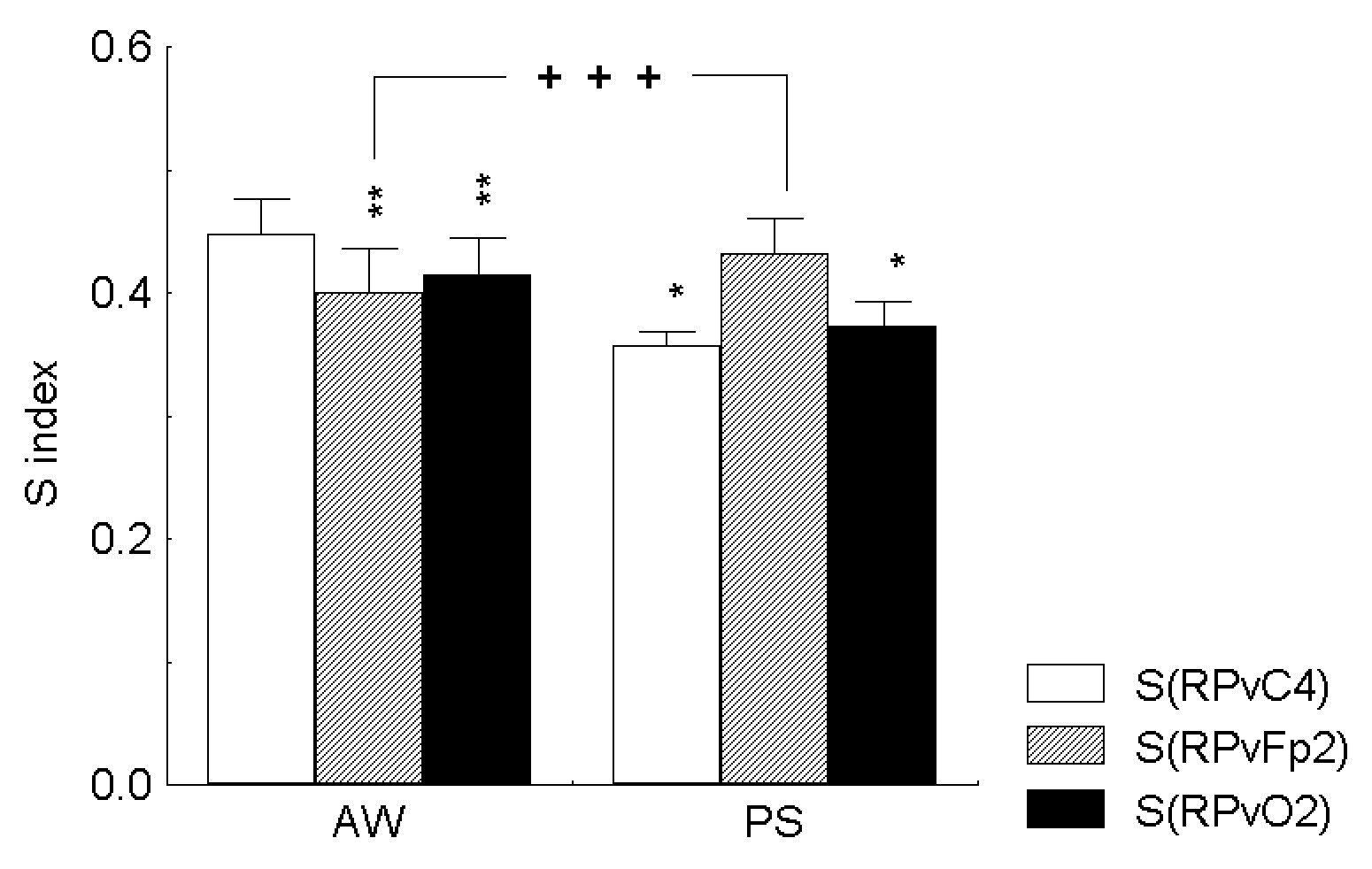Polysomnographic records from six healthy term neonates (age range: 8-14 weeks of life, mean age: 12 weeks) were studied to assess the existence of interdependence between the activity of the central nervous system (CNS) and the respiration during sleep. The monopolar EEGs corresponding to electrode positions Fp2, C4 and O2 (average as reference 0.25 Hz low-pass filter, 40 Hz high-pass filter) as well as the respiratory signal (RS) were recorded (128 Hz of sampling frequency for all the signals). From each baby, two simultaneously recorded stationary and artifact-free segments of each signal (8192 samples each) during waking (AW), active sleep (AS) and passive sleep (PS). A window of 512 samples was slid along the segments every ten samples and the total power of the low frequency (0.5-8 Hz) and the high frequency band (8.5-40 Hz) of each electrode as well as the total power of the RS peak were obtained for each window. The interdependence between the corresponding power signals of each electrode and that of the RS were then assessed by means of the Arnhold index S (Arnhold et al. 1999), after reconstructing the state space of each power signal by time delay embedding (µ = 10, τ = 5, κ = 12 for the calculation of S). The significance of the index and the nature of the interdependence were checked by the multivariate surrogate data test (Pereda et al. 2001).
The results showed that there existed significant interdependence between the power in the low frequency band (all the electrodes) and the power of the RS in all the situations. A MANOVA test was used to check the existence of differences among the different electrodes and situations, which were further analysed by Scheffé’s post-hoc test. They were considered significant if P < 0.05.
Figure 1 shows that the interdependence was greater for the central electrode during AW. However, during PS it was greater for the frontal electrode. No differences were found during AS. The post hoc test showed that this change was due to the significant increase of the interdependence in the frontal electrode from AW to PS (P < 0.001), since the values of S for the other two electrodes did not change.
In adult humans, by using the correlation dimension of the EEG and that of respiratory movements, a decrease of the EEG complexity has been reported, which may be associated with an increased regularity of breathing in deep sleep (Burioka et al. 2001). Our results in neonates – obtained from multivariate analysis of both EEG and respiratory activities – are in accordance with these findings. In addition, we have demonstrated that in neonates during PS there exists a non-linear synchrony between the frontal EEG and the respiratory activity. This result may be important for the assessment of pathological situations in neonates, especially those dealing with respiratory alterations such as the sudden infant death syndrome.
This work was supported by the FIS grant PI 020194 and the MCyT grant BFI2002-01159.

